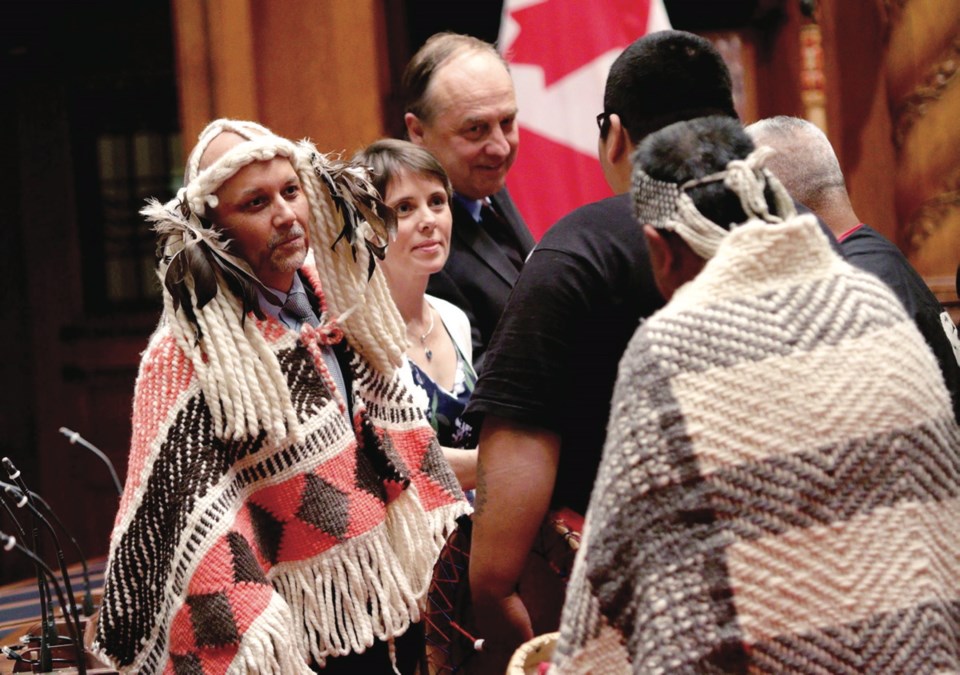One of the most hotly contested provincial legislature seats this year was also the most expensive on Vancouver Island for all three major parties, Elections B.C. financial documents show.
Green Party MLA Adam Olsen more than doubled his campaign spending to $143,000 from $67,000 in 2013, to win Saanich North and the Islands.
Olsen defeated Liberal candidate Stephen Roberts, who spent $147,000, and incumbent NDP candidate Gary Holman, who spent $106,000.
In 2013, Roberts held the record for most expensive Island campaign at $115,000, while Holman spent $98,000 that year.
Combined the three lead candidates spent $396,000, or $8 per voter, in this year’s election.
Green Party spokesman Stefan Jonsson said the party made a strategic effort to invest in Olsen’s campaign, after he came 379 votes short of winning in 2013.
In 2017, Olsen topped Holman by 4,011 votes. Olsen got 14,775 votes, Holman had 10,764 votes while Liberal Stephen Roberts received 9,321. In 2013, Holman won the seat with 10,515 votes. Roberts drew 10,352 votes, while Olsen got 10,136.
“We knew he was a strong contender in this election,” Jonsson said.
“If there was one mistake or challenge they had in 2013, it was that they didn’t raise enough money. So they were very aware of that going into this election, particularly against an incumbent, because there was no incumbent in 2013. The party was behind Adam 100 per cent and wanted to see him succeed.”
While the Green Party also spent heavily on Leader Andrew Weaver and rookie Sonia Furstenau’s campaigns — $87,000 and $73,000 respectively — it meant spending much less elsewhere. In most districts, the NDP and Liberal candidates spent considerably more than the Greens.
New Democrat incumbents held on to several seats, despite spending less than their challengers.
The largest gap in spending was in Saanich South, where NDP incumbent Lana Popham defeated Liberal Dave Calder. Popham spent $81,000, which was $57,000 less than Calder’s $138,000 campaign.
In the North Island district, the Liberals spent $30,000 more than the New Democrats, to lose the seat to incumbent Claire Trevena. In Mid-Island-Pacific Rim, Liberal candidate Darren DeLuca spent $25,000 more than New Democrat incumbent Scott Fraser, who won the seat.
The higher Liberal spending came alongside the party’s Island-specific campaign platform.
“While we certainly fell short of the results we wanted on the Island, I do think we sent a strong message that Islanders and their issues matter to our party, and we’ll be looking to build on that in the next election whenever it comes,” Liberal spokesman Emile Scheffel said.
Where the Liberals succeeded was in Parksville-Qualicum, where incumbent Michelle Stilwell spent $93,000 on her campaign.
Scheffel said the Liberal Party is prepared to transition to a fundraising model that bans corporate donation. The NDP-Green confidence and supply agreement includes a commitment to ban union and corporate donations and limit individual donations.
“Here at the party, we are confident that we will be able to make the transition to new fundraising rules whenever those come into effect,” he said.
Sources of campaign spending varied by candidate and party. Most depended on transfers from party coffers, complemented by varying levels of direct political contributions from individuals, corporations and unions, plus fundraising events.
Olsen’s fundraising, for example, included $770 in corporate donations collected before the party said it would no longer accept them, as well as an individual donation of $25,000 from Darla Draden Ball, made on behalf of longtime Green supporter Roy Ball, whom Jonsson said committed funds before he died.
Stilwell directly raised $27,000 in political contributions, including $17,000 from corporations.



